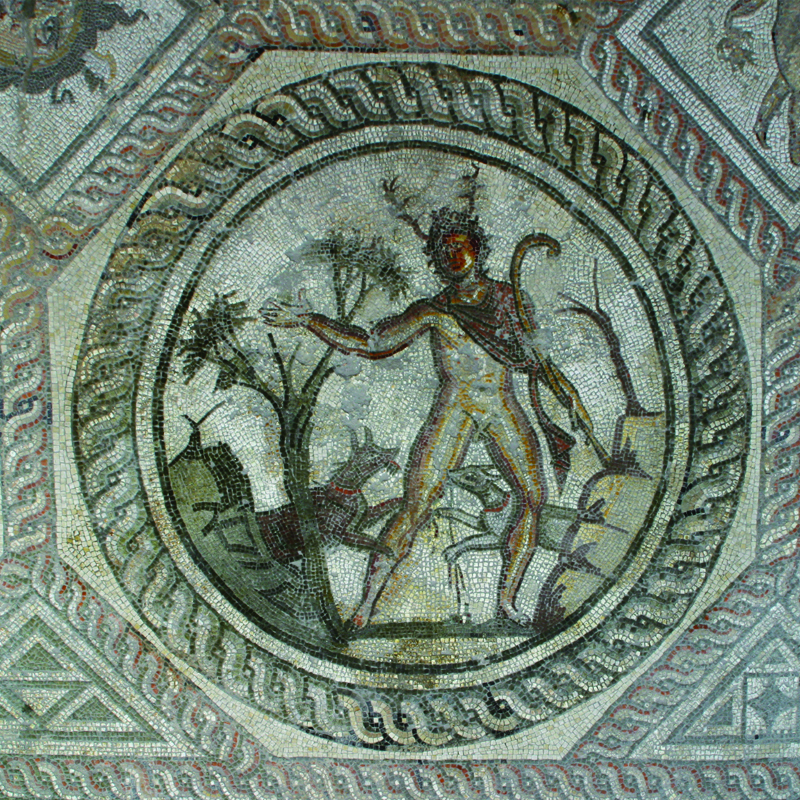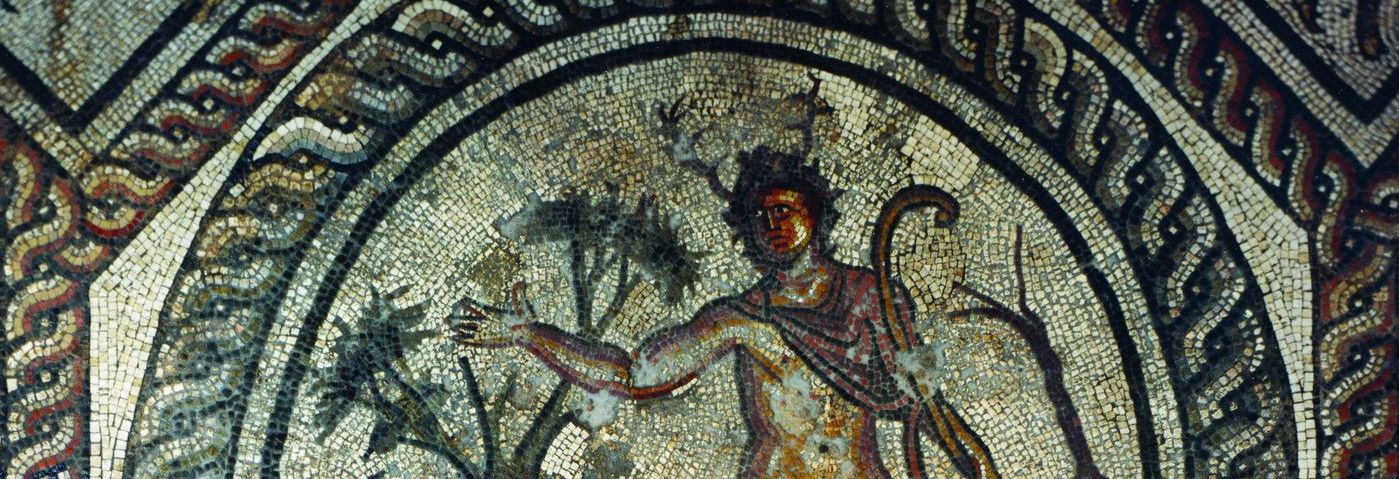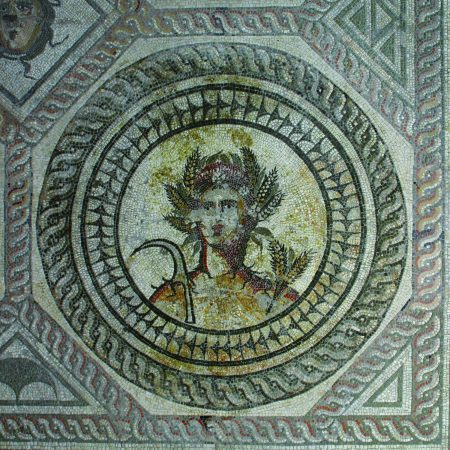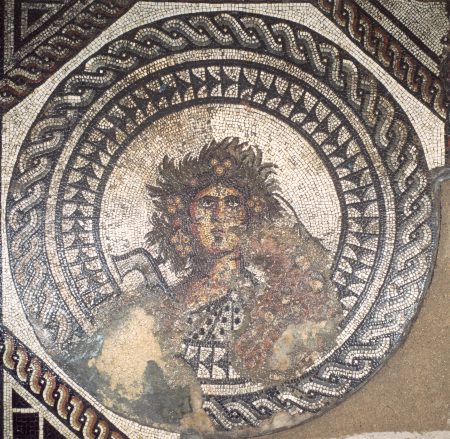Written by Francesca Gordon: Recent Classical Studies Graduate at Royal Holloway University of London. I grew up in Cirencester and visited the museum regularly: a fascinating collection of our local heritage.
Recovered in 1849, this detailed and animated mosaic was discovered on the floor of a Roman British townhouse in Dyer Street, Cirencester. The mosaic illustrates the four seasons and was likely commissioned in 2nd Century AD.
The mosaic symbolises seasonality which was a common theme in Roman art. Seasonality was critical to the farming process’ in the Ancient world. This is expressed by Roman scholar Varro, in his division of labours from his book on Agriculture:
“…For the spring plantings the untilled ground should be broken up so that the weeds which have sprung from it may be rooted up before any seed falls from them…. In summer the grain should be gathered, and in autumn, when the weather is dry, the grapes; and this is the best time for the woods to be cleared…In winter trees should be pruned, provided it is done when the bark is free from the chill of rain and ice…”

Notably, mosaics of this style originate first and foremost from the Greek Islands though swiftly became fashionable in Rome and throughout the Roman Empire. Interestingly this mosaic features Actaeon, a hero from Greek mythology and his hunting dogs. Actaeon was the son of a herdsmen and grew up to be a hunter who, through a series of unfortunate events involving the Goddess Artemis, was transformed into a stag (note his antlers) before being killed by his hunting dogs. The mosaic clearly shows his dogs attacking his left leg and the colours used illustrate some blood gushing out from the wound.
The varied and vibrant colours are created by the different types of stone tiles (tessellae). It is an impressive example of stone craftmanship. Almost 800 examples of mosaics have been found across Britain and it is here in Cirencester that we find one of the finest collections. Expressions of art but also of social and financial prosperity, mosaics are found in both public and private spaces.
References:
Varro, ‘De Re Rustica’, Published in the Loeb Classical Library, 1934, Book 1, Passage 27
http://penelope.uchicago.edu/Thayer/E/Roman/Texts/Varro/de_Re_Rustica/1*.html














Comments
What goddess is the second one? Loved my visit today! 🥰
Hi Bethany, it is Ceres, goddess of summer.